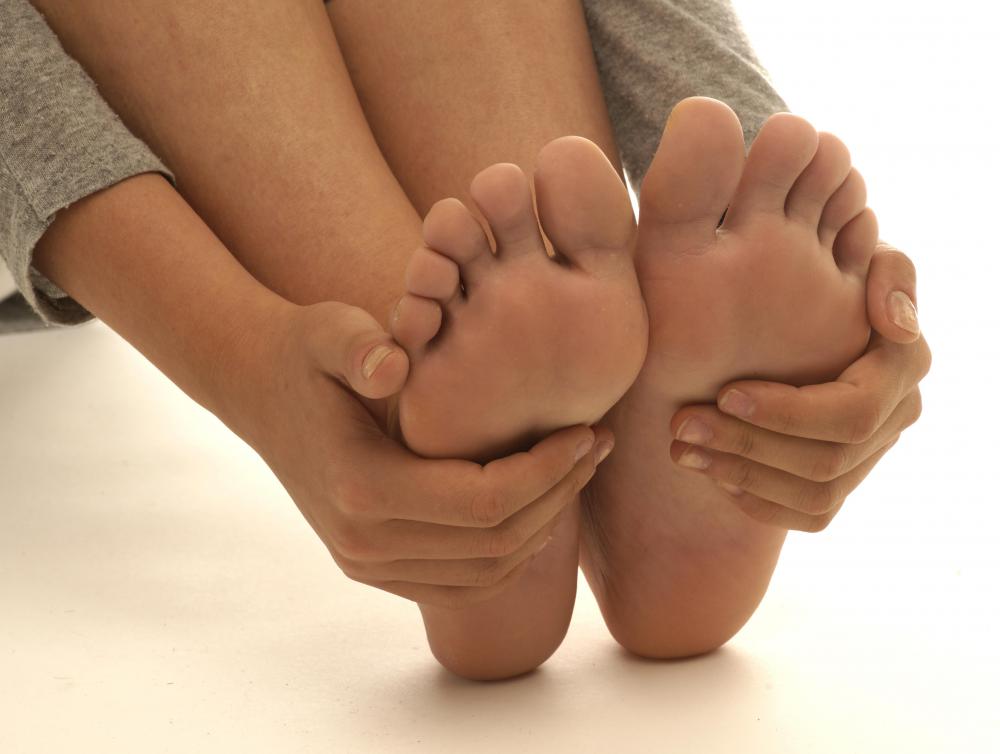At WiseGEEK, we're committed to delivering accurate, trustworthy information. Our expert-authored content is rigorously fact-checked and sourced from credible authorities. Discover how we uphold the highest standards in providing you with reliable knowledge.
What is the Proximal Interphalangeal Joint?
The proximal interphalangeal joint is one of two articulations within the four fingers of the hand and four smaller toes of the foot. Found between the first and second phalanges, the finger and toe bones, it is the second joint in from the tips of the fingers and toes. As opposed to the distal interphalangeal joint, the first joint in from the tips of the fingers and toes, the proximal joint is slightly larger and exhibits a greater range of motion.
In the fingers, the proximal interphalangeal joint is that in the fingers where the knuckle is most prominent. As the thumb has only two phalanges rather than three, there is no distinction between a proximal and distal interphalangeal joint in this digit. Therefore, only the four fingers exhibit this joint.

The movements possible at this articulation, a synovial hinge joint, are flexion and extension, or the curling and straightening of the fingers. Flexors of the proximal interphalangeal joint include the flexor digitorum profundus and the flexor digitorum superficialis. These are deep muscles found in the anterior compartment, or palm side, of the forearm. Both are considered extrinsic flexors of the hand, in that the muscles are located in the forearm; only their tendons penetrate the hand. Contractions of these muscles allow up to 100 degrees of flexion in the proximal joint, whereas only about 80 degrees of flexion is permitted in the distal joint.

Extension of the proximal interphalangeal joint is provided by an extrinsic muscle of the hand, the extensor digitorum. It is centrally located in the posterior compartment of the forearm with tendons running through the back of the hand to the middle and distal phalanges. The extension allowed here is relatively limited by the presence of very strong ligaments, the palmar and collateral ligaments, which prevent the joint from hyperextending. Due to the rigidity of these structures, the proximal interphalangeal joint is the most commonly broken of any joint in the body.

Similar joints are found between the phalanges of the four smaller toes of the foot, as the big toe like the thumb only has one interphalangeal joint. Also a ginglymoid or synovial hinge joint, the proximal interphalangeal articulations of the foot can only flex and extend, with extension limited by the presence of plantar and collateral ligaments. Flexors of this joint in the foot include the flexor digitorum longus and flexor digitorum brevis, found in the posterior compartment of the lower leg and the sole of the foot, respectively. Extensors of this joint include the extensor digitorum longus and extensor digitorum brevis, found in the anterior compartment of the lower leg and the dorsal surface of the foot, respectively.
AS FEATURED ON:
AS FEATURED ON:














Discuss this Article
Post your comments